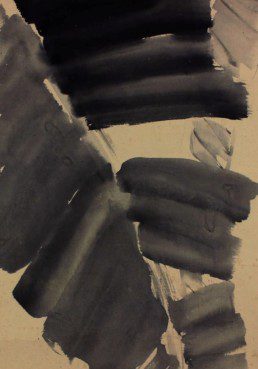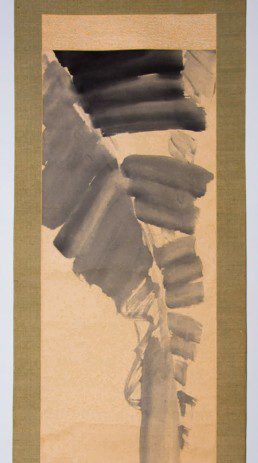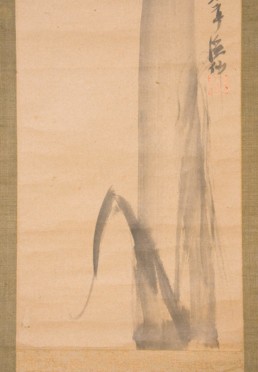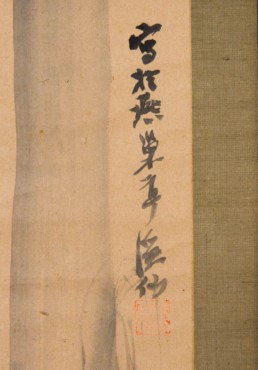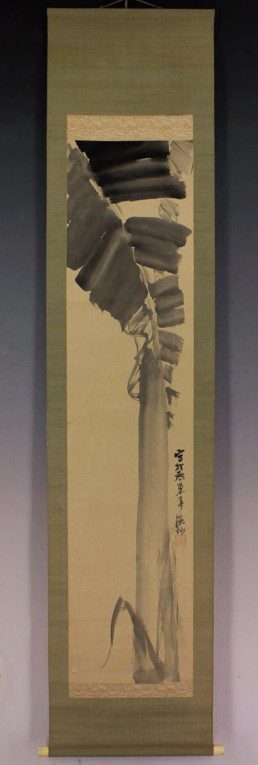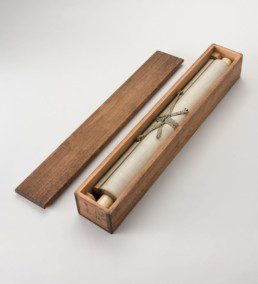[Banana Tree] by Tomita Keisen (1879 – 1936)
Artist:Tomita Keisen (1879 - 1936)Era:MeijiPrice:$1,750Inquire:info@shirakuragallery.com
Japanese sumi on paper—this piece by well-known Meiji/ Taisho artist Tomita Keisen depicts a lone banana tree. Deceptively simple in style, each brush stroke made with sweeping yet calculated motions to evoke nostalgia for sultry summer days and tropical climes. Traditionally in Japan the leaves of the banana tree are used as a wrap for cooking or for carrying food for a picnic—adding to the imagery of lazy summer afternoons spent with friends, family, or perhaps lovers out in nature.
Keisen was trained in classical painting and was well-versed in the Kano and Shijo school traditions. Despite his classical roots, he strove to develop his own unique style of painting. While many of Keisen’s mature works are done in the traditional nan-ga and kacho-ga styles, generally his painting technique strove to avoid what he considered prescribed and uninspired motifs—favoring instead free-form sketching techniques with subjects gleaned from his travels and observations of everyday life.
In fine antique condition, this hanging scroll is 185cm tall and 41cm wide with the artwork being 134cm x 31cm. Signed and sealed by Keisen, it comes housed in a period wood box with the words “Tomita Keisen” and the Chinese characters for “banana.” (examples of Keisen’s signatures and seals available upon request).
Additional Resources:
https://en.wikipedia.org/wiki/Tomita_Keisen
https://art.seattleartmuseum.org/
https://sites.google.com/a/myjapanesehanga.com/www/home/artists/tomita-keisen-1879-1936
